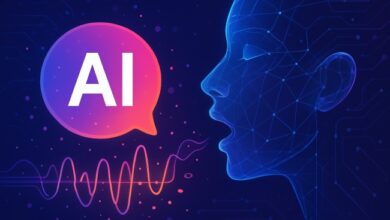The 7 Best AIs for Image and Video Creation

If you’re a content creator, brand marketer or product builder of 2025, odds are good that you’ll be using AI tools to enhance your creations , particularly for video, face swap, lip sync and visual editing. There are plenty of tools out there, but not all devices are made equally when it comes to quality and efficiency.
Having tested these dozens of platforms over the past few months, I was able to come up with a 7 tools list that excelled in speed, usability, quality and output control. At the very least, I promise one of these options will suit your process.
Quick Comparison: Top AI Tools
Let’s take a closer look at top such powerful artificial intelligence platforms and libraries below-Infographic quick comparison. Some of the best AI tools at glance.
| Tool | Best For | Key Strengths | Limitations | Pricing Highlights |
| Magic Hour | All-in-one AI creator | Image editing, face swap, lip sync, video animation; fast workflow | Free tier limits, no desktop app | Free tier + Paid plans for 4K output |
| VidMage AI | Video face swaps | Realistic face swaps with motion tracking | No editing/lip sync, limited video cuts | Free tier with watermark; paid HD output |
| Runway ML | Advanced users & creatives | Customizable workflows, effects, background removal | Steep learning curve, costly at scale | Free limited credits + paid tiers |
| Adobe Photoshop AI | Professional image editing | Deep Adobe integration, precise control | No video/face swap, requires Photoshop skills | Subscription only |
| Luminar Neo | Desktop photo editing | Powerful AI filters, local processing | No video or face swap features | One-time license purchase |
| Akool | Multilingual video creators | Face swap, lip sync, dubbing in multiple languages | UX issues, occasional quality inconsistency | Free tier + paid higher-res tiers |
| Lensa / Fotor | Quick mobile image editing | Easy to use, instant filters and avatars | No video/face swap, low free tier resolution | Free plan + premium upgrades |
1.Magic Hour (Best Overall)
Magic Hour, a web-based AI platform that offers image editing and portrait retouching, 3D-driven image-to-video generation, face swapping and lip syncing It is one of the few tools that deals with the complete content journey , from static image to speaking character video, without needing several different apps or complex exports.
Pros
Apps All-in-one Creator for creators: Editing, face swap, video animation lip sync
Rapid image-to-video transitions and high-fidelity lip sync
Clean UI with zero-coding required
Frequent updates and new features
Social-friendly formats and export sizes
Cons
Free tier has some usage restrictions and watermarks
Video face swapping still isn’t great at really hi-res, multi-face shots
Needs internet to work, no desktop version available
If you need a frictionless trip from edited photo to talking avatar, it’s difficult to beat this. It’s the first resource I point creators to who are looking for fast, quality output without having to knit together five different platforms.
Pricing:
Free tier available. Paid plans kick off with footage capabilities commensurate with a creator-level access, and move up toward professional and business levels for 4K output and heavier usage volumes.
2.VidMage AI
VidMage is almost all things face swap, and even when focused to that degree (or dulled to it), it does its job well and especially in the video format. Upload a source face and target video, then it delivers realistic swaps with good motion tracking and face alignment.
Pros
Great motion realism in the case of face swaps
Video and GIF formats supported
Quick, uncluttered UI to facilitate taking a test quickly
Cons
No image editing or lipsyncing capabilities at all
Not great for intricate video cuts or more than one speaker
Output resolution is limited on free plans
If doing face swap on short video is your main concern, VidMage should get it done quick and clean.
Pricing:
Watermark only on free tier. The paid plans include HD output and priority processing.
3.Runway ML
Runway is one of the more advanced platforms for creative AI, used by pros and artists. It can do everything from video creation to inpainting, depth-based edits and custom AI models. Although it isn’t specialized in face swap, the modular structure enables integration with other tools.
Pros
Highly customizable workflows
Stunning compositing, background removal, and effects
Video-to-video and motion style transfer enabled
Good plugin ecosystem
Cons
Steeper learning curve
Not as face swap or lip sync ready out of the box
Expensive at scale when you’re consuming lots of compute
Ideal for advanced users who need the freedom to be creative and are comfortable with more complex interfaces.
Pricing:
Free tier includes limited credits. Paid subscriptions get you more GPU time and access to higher-level models.
4.Adobe Photoshop AI
Adobe’s AI editing tools like Generative Fill, as well as background generation , are now deeply integrated into Photoshop. For creatives who are already in the Adobe ecosystem, that makes it a little easier to add AI to your design workflow.
Pros
Perfect integration with other Adobe tools
High quality for printing or digital use
There are still precision tools (masks, layers, filters)
Added prompt based generation which is added to the familiar UI.
Cons
No facemesh or video creation
Top-level results still require Photoshop knowledge
Subscription cost can add up
Perfect for designers and marketers that like fine control over images and Ai automation.
Pricing:
Photoshop subscription includes Firefly features. No free plan beyond trial.
5.Luminar Neo
Luminar Neo is a desktop AI photo editing app with powerful tools for improving portraits, adjusting lighting, replacing skies and retouching. It’s a photographer’s tool to begin with, not a video or face swap machine.
Pros
Powerful AI filters and adjustments (i.e. relight, skin smooth, sky replace)
Complete local processing – for privacy-conscious users
Perpetual licensing (no subscription required)
Cons
No face swap, no lip sync and no videos allowed.
Lacks collaborative or cloud-based features
Best for: Individual creators and photographers who are looking for quick, high-quality edits on their local machines.
Pricing:
No free tier; licenses and bundles are available separately for purchase.
6.Akool
Akool is one of the only platforms specifically developed to support multilingual video creation complete with lip sync, face swap and dubbing all in one shot. It is particularly helpful for creators trying to reach audiences in multiple languages.
Pros
Supports multiple languages and dubbing
Lip sync + face swap + video make in one pipeline
Competitive running times and realistic generation of results
Cons
UX still in development The my new bote now that I’m paying Attention to” is Janky Occasionally Bugs/ Timing of the music choice (when it comes on) / transition design could be cleaner, etc..
Full scene editing may need more than one upload
Quality may differ depending on source material
If you want to regionalize contents while keeping speaker realism Akool is a tough candidate.
Pricing:
Free tier with essential constraints; paid tiers allow higher resolution and longer videos.
7.Lensa / Fotor (Quick Editors)
These tools are created to be used for fast image editing, AI Portrait Retouching, Avatar Creation as well as Filters alone. They are made for speed and convenience , not the entire content pipelines.
Pros
Extremely easy to use
Instant filters and beautification
Available on mobile
Cons
Not recommended for video or face swapping
Limited customization or pro features
Low resolution outputs for free tier
Great for social-first creators who crave quick visuals without the complexity.
Pricing:
Free plan, with premium offering HD exports and more filters.
How I Tested These Tools
I put each tool through a creator’s real workflow:
Begin with a photo or headshot.
Face swap for changing the face .
Generate an image-to-video sequence.
Apply lip sync with audio.
Export and test for realism, speed, usability.
I favored tools that could manage more than one step with less back-and-forth. I also scored tools on:
Output quality
Render time
UI clarity
Learning curve
Free tier value
Format and export options
2025 AI visual creation trends
Here are a few of the major trends shaping the visual AI space this year:
End-to-end pipelines are a must , creators want to be in one tool from the image all the way through the final video.
Face swap + lip sync combo tools are becoming popular, especially for social content and localization.
Prompt-free editing interfaces have been wooing users who don’t want to have to type out detailed commands.
Enhancements in latency and realism when it comes to mouth movement and other forms of emotional expression are also helping reduce the “uncanny valley” effect of virtual characters.
Multilingual video production is an emerging market for education, marketing, and global messaging.
Final Takeaway
If it’s 2025 and you’re building or scaling content creation, here is my decoding:
Best total platform: Magic Hour , the quickest workflow for photo, video, face swap and lip sync.
Best for video realism: VidMage AI , cleaner face tracking and swaps.
Best creative flexibility: Runway ML , deep tools for blending and finishing.
Best for multilingual content: Akool , dubbing, face swap and lip sync, in one mold.
Best for pure image editing: Luminar Neo vs Photoshop AI If you’re used to paying wedding fees, rubber stamping large complex graphics or perhaps something simple and minimalist would make your design even more compelling!
FAQs
1. For creating images and video in 2025, what will be the best AI-tool?
Magic Hour is by far the best editing app for making cool edits and swapping faces.
2. Which AI does face swapping best?
VidMage AI provides stunningly realistic face swaps combined with flawless facial motion tracking for your animated videos.
3. What tool do professionals use?
Runway ML is for more experienced users who need creative freedom and top-of-the-line editing options.
4. Which AI supports multilingual videos?
Akool enables dubbing, lip sync and face swap in various languages, truly serving the worldwide creator.
5. What is the best AI to edit photos only?
Luminar Neo and Photoshop AI are among the best picks for pro-level image enhancement.
6. Are these tools beginner-friendly?
Yes, for the most part — particularly Magic Hour and Lensa/Fotor — these full featured are quite intuitive to operate without any knowledge of Photoshop.
7. Are there any free tools available?
Magic Hour, VidMage AI and Akool provide tiers with basic features.



